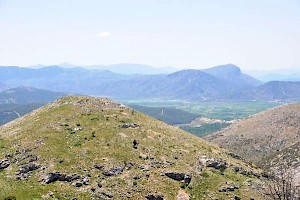Sagalassus (334 BCE)
Battle of Sagalassus: the battle between Alexander the Great and the Pisidians in the winter of 334/333 BCE, which ended in a Macedonian victory.

In the summer of 334, the Macedonian king Alexander decided to capture the ports of Caria and Lycia, hoping to deny their use to his enemies, the Persians, no longer be able to reach the Aegean Sea, would be unable to threaten Macedonia and Greece. The decision turned out to be a grave error. Alexander lost much time at Halicarnassus, allowing his opponent Darius III Codomannus to regroup his forces. After a tactical success, Alexander continued to the west, losing more time capturing minor towns. In the end, he gave up this attempt, and moved north, away from the coast, to the interior of Anatolia, where he wanted to unite with other Macedonian forces. He found his way blocked by the Pisidians living at Sagalassus.
Alexander's biographer, Arrian of Nicomedia, tells in his Anabasis 1.28 that the Sagalassians were excellent warriors, who occupied "a hill in front of their town, a position no less good for defensive action than the wall itself". Alexander ordered an attack by his light infantery, and won the day because his soldiers had better armor. Five hundred Pisidians were killed, and the Macedonians could proceed to Phrygia, to Gordium.